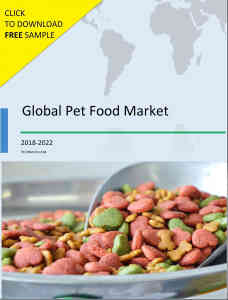For millennials, pets are like family members. This trend of pet humanization has had a major impact on the global pet food market. With the 2017 sales of pet food products crossing the USD 26 billion mark, it is interesting to analyze the latest trends that are redefining the pet food industry.
 1) Pet Humanization: the new age humanization process
1) Pet Humanization: the new age humanization process
From ‘pet owners’ to being ‘pet parents’, the attitude towards our four-legged friends has changed immensely. With consumers treating pets as more like their own kids, there is tremendous interest in knowing what goes into making pet food. This nascent trend has revolutionized the traditional pet food industry. Today, pet owners prefer purchasing feeds that align with their own dietary habits. The emergence of grain-free, gluten-free, and raw frozen diets is the direct result of this trend towards humanization of pets.
Leading names in the food industry like Nestle, Rondo Food, and Mars have already launched pet foods that are rich in protein content.
2) Preference for functional pet foods
Another testament to pet foods becoming increasingly specialized is the growing popularity for functional pet foods. The basic premise behind the preference for these types of foods is that, just like the owners, pets also age. Therefore, ingredients like probiotics, omega-3 fatty acids, and prebiotic fibers are desired in pet food products. These functional pet foods address specific health concerns like indigestion, dental health, alongside joint and cartilage dysfunction in the pets.
Related report: Pet Accessories Market 2019-2023
3) Foods with preventive benefits
Preventive health management is no longer just for human beings. Pets have emerged as a major target group for foods with preventive benefits. Particularly in the US, close to 75% of dog owners and 70% of cat owners prefer high quality pet feeds that are effective for preventive health care.
4) DIY pet foods
Most pet parents are not dependent on supplements for their pets. Often, home-cooked pumpkin, grilled meat, mix-ins, spray-on nutrients, etc. are offered to the pets. The popularity of DIY pet foods has led to the launch of several websites and recipe books that solely deal with this speciality.
Several major pet food brands are addressing this trend by offering products that can be personalized or used in combination with other products. For instance, the raw and dehydrated pet food segment provides a lot of scope for DIY experiments.
5) Demand for home-delivered pet food
Home delivery of pet foods is another trend that has opened up the gates for innovation and competition in the global pet food industry. Pet parents increasingly prefer brands that deliver highly customized pet foods right to their front doors.
Brands like The Farmer’s Dog, Ollie, PetPlate, and NomNomNow are major names in the pet food home-delivery segment. The Farmer’s Dog specializes in veterinarian-developed meals that are cooked just days prior to delivery. PetPlate meals, on the other hand, are comprised of USDA-certified meat, fruits, and vegetables.
According to industry experts at Technavio, all the above-mentioned trends are quite popular in the emerging and third-world economies as well. The future of the global pet food industry most definitely hinges on innovation, personalization, and fervent attempts to differentiate from the competing brands.



